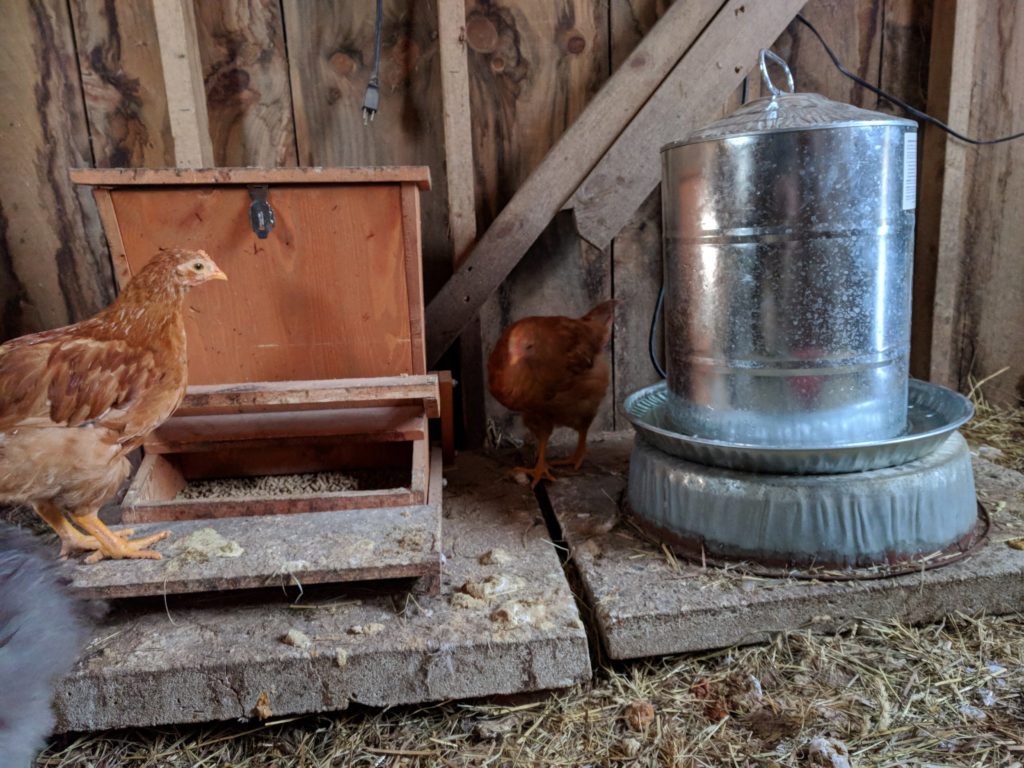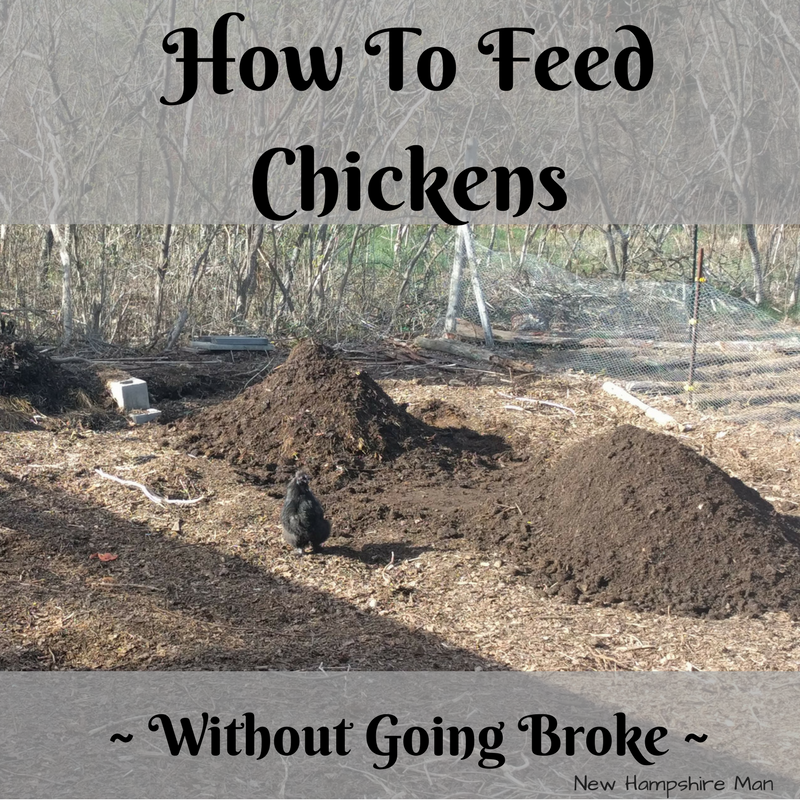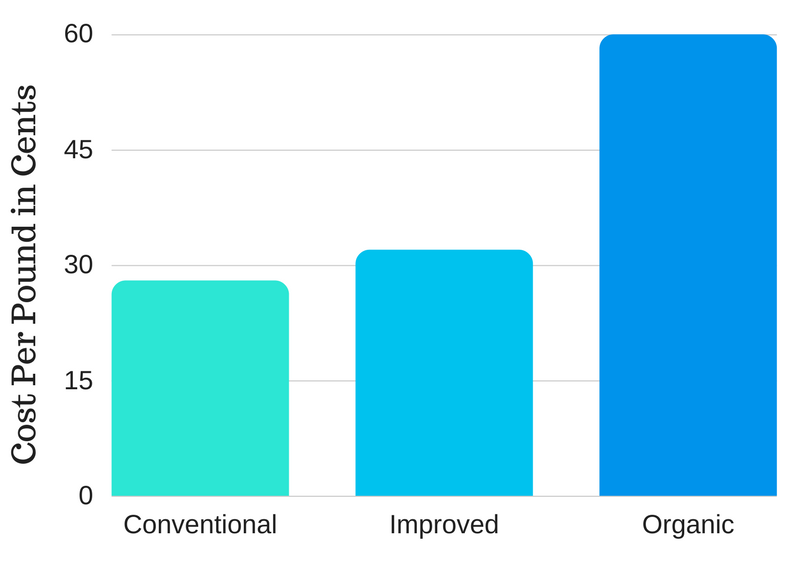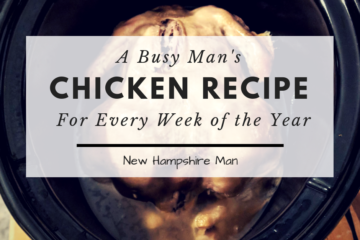Another in the ‘How To Raise Chickens’ Series is how to feed chickens.
This article will cover what type of feed to provide at each stage of a chicken’s life, and then get into how to supplement commercial feed to reduce the overall cost.
You Pay for Protein
The first thing you might notice on a bag of chicken feed is the Percent Protein.
The percent of protein is largely what you’re paying for.
Little baby chicks put on weight pretty quickly, so they need a pretty solid dose of protein in their diet. Eighteen percent is what most starter/grower feed come in at.
After the chick phase comes the layer phase. Traditionally, this is when you will have to provide more volume of a lower protein feed. Read the whole article, though, to see how you can cut the volume by supplementing.
How to Feed Baby Chicks
Here are the factors to look for when feeding baby chicks:
- Protein: Most chick starter feed will be at least 18% protein, if the bag you’re looking at is not, it should raise your eyebrow.
- Consistency: Chick feed should be crumbles, not pellets.
- Grit: Sprinkle a little chick grit on the feed until they get access to real outside earth. The grit helps them grind up the food for digestion.
- Medication: You have a few options here:
- Get your chicks vaccinated at birth and feed them un-medicated feed.
- Get un-vaccinated chicks and feed them medicated feed.
- Get un-vaccinated chicks and feed them un-medicated feed.
A deep dive into vaccinations is not what this article is about, so I’ll leave the research up to you for the time being. If it’s worth anything to you, I practice option 1 or 2. If I’m buying from a hatchery that vaccinates, I’ll probably take them up on it. Whereas if I hatch my own, I’ll probably feed medicated feed.
Provide feed in a chick feeder and make it, and water, always available.
The chicks will poop in their feed, so be ready for that, and clean it out as necessary.
How to Feed Grown up Chickens
I’m an engineer, so at first, I deliberated on this too much:
There will come a time to transition from chick feed to layer feed. Don’t stress it. Once they get big and feathered out just finish the chick feed you have and transition to layer feed.
You may consider using a grower/finisher feed between the chick feed and layer feed. I did the first time around. Now that I hatch my own chicks, once they end up in the coop they’re all eating the same food (layer) and it has worked out fine.
What to look for in chicken (layer) feed:
- Protein: I don’t sweat this much as long as it says ‘Layer’ but I expect it to be around 16% protein.
- Calcium: Layer feed should be fortified with calcium to keep the egg shells strong. Keep reading this article for ways to supplement.
The Cost Spectrum
Conventional, Improved, organic and non-GMO feed options are all out there. Here’s the spread in cost where I buy my feed (Tractor Supply) at the time of this writing:
The choice is totally yours to make. Just be advised that the organic and non-GMO feeds are generally packaged in smaller bags which make the cost spread not look so dramatic.
Again, for what it’s worth to you, since my birds get so much free range I justify feeding a high quality conventional feed. Namely, Purina Layena.
Feed Supplements
Here are some supplements you can provide to make up for potential shortcomings or add diversity to their diet:
- Scratch Grains: Sometimes just called scratch, it’s a mixed of grains that give the birds some energy, and is also encourages them to perform their natural pecking behavior. Provide this by scattering it on the ground.
- I use scratch to entice chickens to prepare land for planting. I spread it in places that I want tilled and they spend the day working for me.
- Oyster Shells: Layers use a lot of calcium to build those eggs every day. If the shells ever seem thin, or weak consider supplementing with some bagged oyster shell.
- If the chickens are eating mostly bagged layer feed, they shouldn’t need oyster.
- If they are free ranging a lot, and eat a lot of food scraps and scratch, then you may consider making oyster shells available.
- If you do decide to supplement with oyster shells, make it free choice in a bowl somewhere.
- Keep reading to see how to provide calcium from egg shells.
How to Cut Feed Costs
The part you skipped ahead to, or have been waiting for.
Here are the things that I have done, or have heard about, to supplement the feed and reduce costs:
- Kitchen Scraps: Bottom line – all organic material from my homestead goes to my chickens. They go bananas when I bring the compost bucket out to them.
- I feed them (almost) everything. Onions, avocados, meat (cooked), egg shells included.
- I generally keep raw meat from them unless I’m really confident in the source.
- Egg Shells: This is a good way to supplement calcium.
- I’ve heard of chickens getting the taste and eating their own eggs. This hasn’t happed to me. If you’re worried about it, consider crushing them before providing to the birds, and even baking them for a few minutes to make them even more brittle before crushing.
- Garden Waste: Everything from the garden goes to the chickens. They process it into compost and it goes right back into the garden.
- The best way to do this is to have chickens border the garden so the transport of waste and compost is super easy – just make sure you can smartly fence them out.
- Compost: My chickens till and turn a lot of compost for me, which is great. While they’re doing that they are also eating bugs and worms in the compost, and pooping on the pile increasing fertility. That’s a win-win-win.
- Free Range: This can be tough because they scratch everything whether you want them to or not, but if you can let them run around they’ll get great exercise and eat bugs all day. Another win-win. Bug control and feed supplement.
- Important Note: I have noticed a DISTINCT increase in yolk vibrancy when the birds get to free range. Supplementing feed with a natural diet can have a huge impact.
- Soldier Flies: I haven’t done this, but if you’re interested you can study up on it as a potential high-protein supplement for chickens.
- Maggots: Another one that I haven’t done, but you might see it out there. A bucket of raw meat with small holes in the bottom. Flies come in, maggots hatch, and fall onto the ground underneath the bucket for the chickens to eat.
- Caution: I heard somewhere of the possibility of disease transmission from this. Study up on it if you want to try it.
My Current Feeding Process
This summer, 2018, will probably mark the highest feed conversion ratio I’ve ever had. My goals are:
- Super Healthy Chickens
- Superior Egg Production
- Low Feed Cost
- Capitalize on the labor

The feeder on left was purchased from Northern Tool and has helped reduce the amount of feed the chickens spread around the coop. The waterer to the right was purchased from Tractor Supply and is on a base that keeps it from freezing purchased from Amazon.
This is my process to accomplish those goals:
- Feed a scoop of Purina Layena Pellets in the morning.
- Spread a quart of scratch grains in the morning where I want them to scratch and till.
- Always keep 2 waterers available with clean water.
- All organic waste goes into their run.
Justification:
- 1 Scoop of Feed: I strike this balance by slowly reducing feed from always being available. Once I get to the point where there is feed still left over at the end of the day, I subtract a little bit and make that my daily offering.
- Occasionally I’ll plus it up to verify the amount still seems good,
- Or, monitor at the end of the day and if there is still some left over I can subtract a little more.
- If I ever notice a reduction in egg supply I’ll consider increasing the amount of daily feed.
- Scratch: The main reason I use scratch is to focus their energy where I want it. I give the birds so much space I think the ‘free range’ aspect of our system covers the exercise and diverse diet objectives.
- Water: Always Always. I have 1 waterer in the coop, and 1 five gallon bucket with nipples on the bottom outside.
How to Store Chicken Feed…and how much
The biggest problem in storing feed is keeping the critters out of it.
I pour a bag into a metal container to work out of and store a bag or two in a big rubbermade tub.
The squirrels and chipmunks have chewed into the tub, so I’m working on acquiring larger, metal storage containers for storing bags of feed.
As a preparedness-minded person, my goal is to have a month of feed on hand.
There’s always more
I think that’s a healthy intro to feeding chickens and I hope it provides value and guidance for you.
Let me know about your feeding regiment and if there’s anything that you’ve found to work well that I haven’t mentioned.
Please subscribe and stay tuned for more ways to pursue personal freedom through good animal husbandry.




